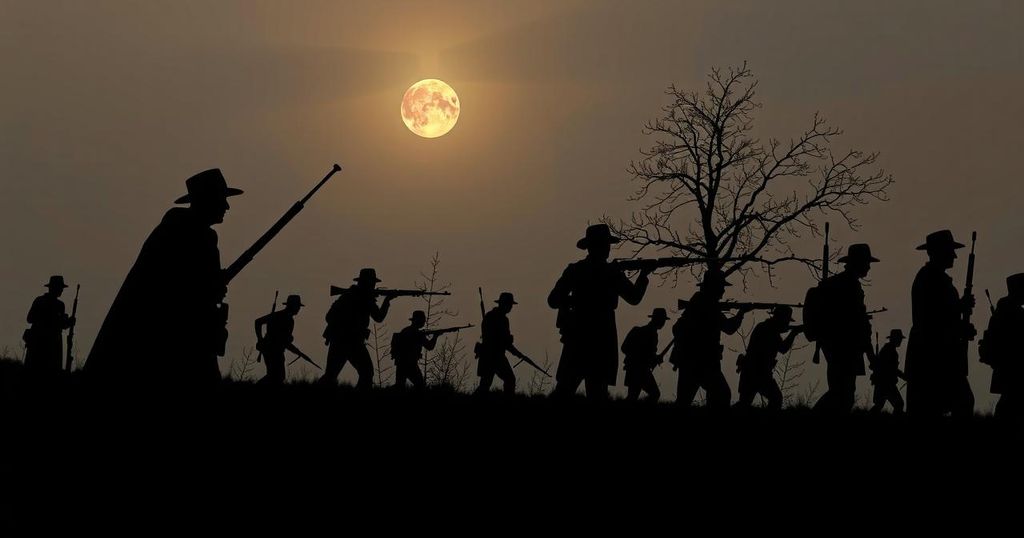Timelapse of the American Civil War: A Detailed Look at Changing Front Lines
Summary
Amateur historian EmperorTigerstar presents a timelapse video of the American Civil War, detailing the consistent Union blockade that stifled the South’s economy. With significant battles like Antietam and Gettysburg, the war saw the evolution of tactics from limited engagement to total war focused on destroying the Confederacy. Ultimately, the war concluded with the surrender of major Confederate armies in 1865, leading to a pivotal transformation in American society and governance.
The American Civil War, an agonizing conflict that lasted four years, is meticulously chronicled in a captivating timelapse video by amateur military historian EmperorTigerstar. The visualization captures the evolving front lines of the war on a daily basis, highlighting the rigidity of the Union blockade which remained constant throughout the conflict. This blockade significantly hindered the South’s ability to export essential resources, such as cotton, and restricted the import of military supplies crucial for the Confederacy’s survival. EmperorTigerstar stated, “As the war continues, it actually does look like an anaconda is squeezing the Confederacy to death like the Anaconda Plan was described. The lack of industrial capabilities in the South shows how once it lost New Orleans, things immediately went downhill and Atlanta’s loss sealed its fate.” Despite the notable impact of significant battles such as Antietam and Gettysburg, which are often cited as pivotal in the war’s narrative, EmperorTigerstar observes that these events are merely fleeting moments in the overall conflict timeframe. The genesis of the American Civil War commenced on April 12, 1861, when the Confederate forces initiated fire on Fort Sumter, ultimately resulting in nearly a million soldiers facing off along a frontline stretching 1,200 miles by year’s end. The year 1862 witnessed intense fighting, with substantial battles such as Shiloh, Gaines’ Mill, and Fredericksburg unfolding across the landscape. These battles paved the way for even larger confrontations in ensuing years, including Vicksburg, Gettysburg, Chickamauga, and Atlanta. Over time, the Union’s objective evolved from the limited goal of restoring the Union to the broader mission of enacting total war upon the Confederacy and abolishing the institution of slavery, encapsulated in President Lincoln’s poignant address at Gettysburg. Throughout the war, General Robert E. Lee’s Army of Northern Virginia engaged in desperate defensive maneuvers against the Union Army of the Potomac, which struggled under a succession of ineffective commanders until the arrival of General Ulysses S. Grant in 1864. Grant’s relentless campaigns at The Wilderness, Spotsylvania, Cold Harbor, and Petersburg ultimately led to Lee’s surrender at Appomattox in April 1865. Meanwhile, Union forces in the western theater gained a series of victories over undersupported Confederate armies. In the latter phase of the conflict, General William Tecumseh Sherman carried out his infamous march through Georgia and South Carolina, devastating the South’s economic framework, while General George Thomas dealt a significant blow to the Confederate Army of Tennessee during the battle of Nashville. By the spring of 1865, the last of the major Confederate armies had capitulated, marking a significant turning point and ultimately ending the Civil War.
The American Civil War (1861-1865) was one of the most pivotal conflicts in United States history, primarily centered around issues of slavery, states’ rights, and economic disparities between the industrialized North and the agrarian South. The war began with the Confederate attack on Fort Sumter and witnessed some of the most significant battles and military strategies. Throughout its course, the tactics and policies employed, such as the Union blockade and the Anaconda Plan, aimed to economically and militarily weaken the Confederacy, which struggled against a more industrialized opponent. The outcome of the war profoundly impacted the nation’s trajectory, leading to the abolition of slavery and significant changes in federal and state relations.
In summary, the American Civil War, illustrated through the timely visualization by EmperorTigerstar, not only reveals the geophysical changes in battle lines but also encapsulates the strategic interventions that defined a nation’s fight over its complexities of governance, race, and human rights. This extensive conflict culminated in the reunification of the United States and the establishment of a new societal framework in the wake of Reconstruction, significantly reshaping the nation’s history and cultural identity.
Original Source: gizmodo.com








Post Comment